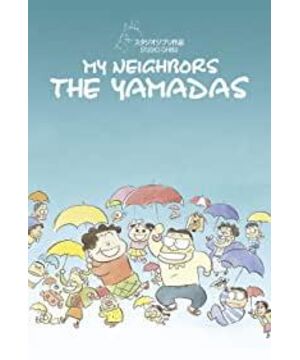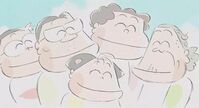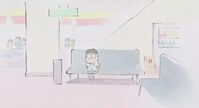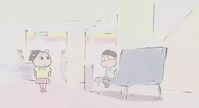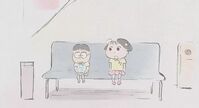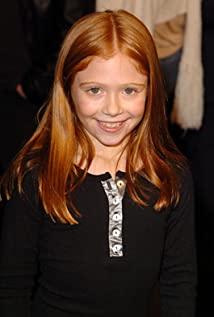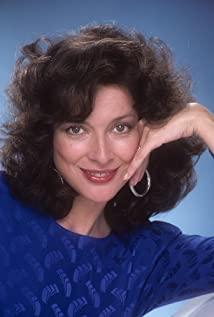In fact, it is no exaggeration to say that Hayao Miyazaki and Isao Takahata, as the two banners of Studio Ghibli, let the old man surpass Isao Takahata at the moment when "Princess Mononoke" and "My Neighbor Yamada-kun" were released. Hayao Miyazaki used his own pen to create a forest world full of monsters and extraordinary imagination, and finally made "Princess Mononoke" become the new box office champion in Japan, causing a crowd of people. ", which changed Ghibli's painting style, which led to a fiasco at the box office, and ultimately led to Takahata Isao not releasing a new work for 14 years until "The Story of Kaguya."
But "My Neighbor Yamada-kun" is a very lovely work. Considering the play, it does not contain more sad elements than his other four Ghibli works. It can be said that this is a A particularly interesting animated sketch about the family.
From a layman's point of view, the impact of the painting style of "Yamada-kun" is particularly strong. It uses a method similar to sketching and watercolor to paint. Except for the main characters, other backgrounds and characters are It is drawn with a few strokes, and it looks particularly dreamy. In "Yamada-kun", Isao Takahata created his own unique world, one family, one world, as if the outside environment had nothing to do with them.
Compared with the changes on the screen, the plot of the movie is a bit confusing, because the whole story is completely fragmented. Even though there are many particularly rich jokes and highlights in the movie, it is necessary for all audiences to experience This kind of detail, which they may have already known in their lives, may indeed be a bit of a challenge. It is obvious that Takahata is challenging a narrative method that few people try, that is, a completely scattered narrative. To put it simply, father, mother, grandmother, brother and sister each have their own chapters. The relationship between various characters in the family is set up: the difference in personality between the parents, the tacit understanding between the grandmother and the mother, and the "father-son relationship" between the brother and the father.
Gao Lao must be a person who loves life very much. Generally, things that appear in life: robbing TV to watch and shopping for vegetables are actually taken by Gao Lao as an official story to show the audience, and it is different from youth comics. There are particularly exaggerated plots in the film, and the style of Lao Lao is always very simple. Even if there are exaggerated and funny actions, it feels as if these things will happen in life. For example, a father is teaching his children that the soup should be poured into the rice when making rice, and he even compares the construction workers when he goes to work: "Look, they are like the concrete!" The father's unreasonable and more sincere attitude is really is hilarious.
But is this accumulation of life details good or bad for storytelling? In fact, when I was watching "Fantastic Tanuki", I had begun to notice that Mr. Gao had more ideas than Hayao Miyazaki in storytelling, because there was no definite protagonist in "Tanuki", in "Yamada-kun" ", this "no protagonist" style can be said to be intensified, the movie has become a subset of paragraphs, a bit like a four-frame comic, each paragraph has a small story, and even added a red sentence after the short story, which can be described as extremely coquettish. However, is it particularly difficult to watch an animation without a central story? It may be fine to watch a short film of ten minutes, but it will be extended to a 100-minute movie, including when I watch the middle, I will unconsciously feel tired.
But just like what I said in my review of "Variety Civet Cat", the narrative style tried by Mr. Gao is very dangerous, because many people can't accept this kind of movie without a story, like "Aguila" Or an animated movie like Evangelion (just watched/watched recently), which confuses the somber vibe and complex sci-fi concepts that the story exudes rather than the fragmented story . But "Yamada-kun" tries another way. It is obviously a lighthearted and happy family sketch, but it uses such a narrative method, and the mainstream animated films of Ghibli it bears, the story it expresses. The core, naturally, will not express more than the live-action art film (it is Hirokazu Koreeda).
It’s not that Mr. Gao didn’t try to condense the short stories in the movie. The beginning is a super gorgeous newcomer’s wedding. The old man’s earnest teaching: husband and wife should be strong and work together to overcome difficulties. There is also an important one, the need for a child ( cover up). He seems to be using this point, family life requires concerted efforts to overcome difficulties together, so he has the details of life described later. But my first impression when I looked at it was that we young people, at first glance, it was a bit awkward. Moreover, in this speech, what it emphasizes is not the relationship between husband and wife, but more about using responsibility as the focus, and even in order to maintain the relationship, we need a child as the focus of the relationship between husband and wife. The emotional outlook of middle-aged couples is a bit unacceptable to me.
The story of falling down Nonoko is not only super hilarious ("My father, mother, brother, and grandmother are all lost", "It turns out that it is popular now that adults are lost") and initially depicts the character of a family in a car, Grandma's venomous tongue, mother's nerves... Squeezing into a car and arguing is really interesting. The hardships of life are not due to the huge difficulties encountered, but more often they appear like this.
But even with such an attempt, there is still no emotion that connects the previous details at the end, which is really regrettable, because Takahata Isao's films are a little dull, but there is always a passage that can make people feel The charm of animated movies: the end of "A Fairy Tale of Time", the night run of "The Tale of Kaguya"... But "Yamada-kun" is still too bland, and as I mentioned earlier, its depth should be It is carried by a live-action film, but it is really too commonplace like this animation, and it will make people look down on it. I told Director Takahata Xun, this is a dilemma.
What's a little embarrassing is that when Miyazaki used the charm of animation to shoot the grand and majestic mountain beast, Takahata Isao kept shrinking inward. The "cruel" things expressed in "Yamada-kun" are actually a lot less, because Takahata is always ordering until the end. For example, after his father came home drunk, he scolded his mother for not giving him delicious food, but then he still ate it obediently. When the banana was raised, his mother sat next to him and watched TV, and the atmosphere calmed down immediately, as if everyone was at a low ebb; Dad was bullied by the racing party, and he had to ask his mother-in-law to come to the rescue. Seeing the calm expression of the old man, Dad would think What are you doing? Maybe you think that you have lost a lot of spirit in your life, maybe you have to ask yourself what's wrong. Although it is a family story, it still has as much to explore as the heavyweight works. However, the audience may not necessarily feel this.
Therefore, Mr. Gao took a slanted path of exploration, and his exploration in "Yamada-kun" went further than "Variety Tanuki". He challenged new forms of painting, and even led to civil unrest within Ghibli; he challenged new narrative techniques, but the story could not be accepted by the audience at the time. Takahata Xun’s journey can be described as thankless. As a layman, I naturally feel that painting like this is of course easy, but I didn’t expect that such animations not only challenge the painting habits of the staff, but also such animations are still improving and cost-effective. It's not lower than Hayao Miyazaki's animation. Pay attention to the constant changes in the lines. I don't know how much drawing paper is needed to bring this dynamic description to the screen. It can be said that this is using "not simple" to create simplicity.
In this work, although the spirit of exploration is very prominent, Takahata's own style is still vaguely visible. Mr. Gao has always been very able to capture the details of life. I think among so many small stories, the image of his father is the most interesting. Lonely photographing the snow scene in the snow, and at the end of the scene where a person swaggeringly walks in the forefront, the thought of "I am a man with unfulfilled ambitions, how can I live with you mortals?" It is also amazing that Mr. Gao used the form of adult sketches to describe the scene where his father went to see the racing car. This is an important point that Mr. Gao emphasized that there is no difference between animation and reality. Used better, the film might also transcend the boundaries of sketches.
When I was writing my review of "Curveid Cat" earlier, I brought up a difference between Isao Takahata and Hayao Miyazaki. Yesterday, when I watched Katabuchi’s introduction to Takahata’s animation works, he said: The characters in Takahata’s works are always objective, and we are the observers of these animation characters, not the witnesses. So even though there are so many lovely characters in Takahata's script, none of them are impressive. On the contrary, the characters in Hayao Miyazaki's writings (especially girls) are like the characters he wrote with painstaking effort and emotion. In fact, in this way, Isao Takahata is more like a writer and director.
Takahata Xun is undoubtedly doing animation full of feelings for life. In "The Fairy Tale of the Years", which is similar to this work, there is a particularly peaceful scene: everyone eats pineapples together. Everyone looked at this fruit from other countries with curiosity, and each of them officially cut a piece, but after eating it, everyone felt that it was not delicious. He said: I never use cheap sensationalism to move people. He did this, and in this "failure", he wrote the memories of "Pineapple" into beautiful trivia. He tells us how to be the beauty of life, the beauty of trivia, the beauty of the seasons, the ordinary and moving. When animation is more and more pursuing gorgeous pictures, he is still describing ordinary things at the most expensive cost, which is really touching.
View more about My Neighbors the Yamadas reviews


